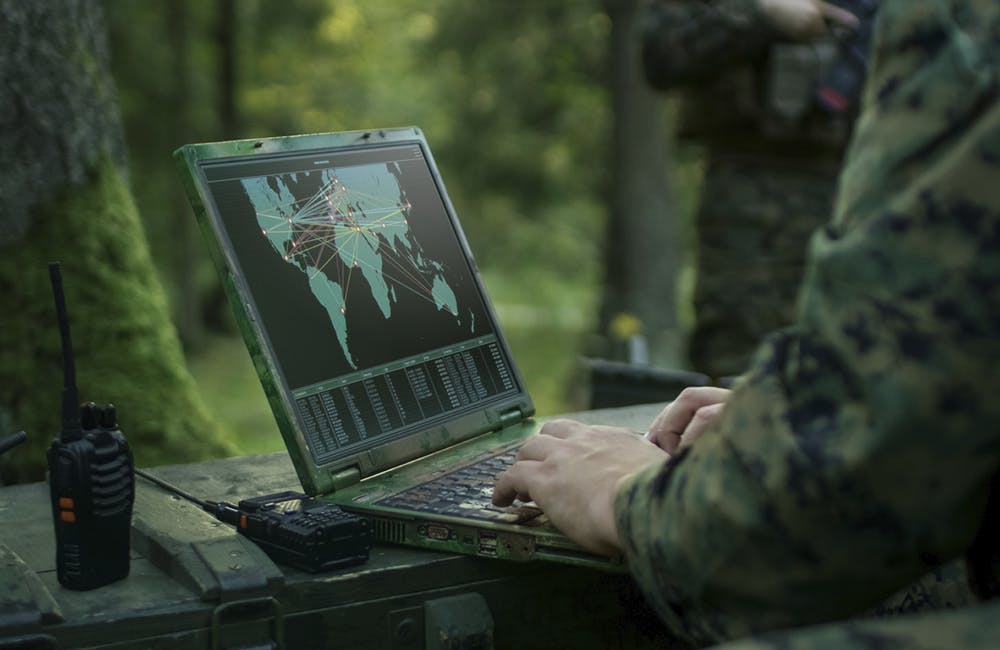How DOD’s Modernization Approach is Shifting Top Tech Priorities
Cross-collaboration and changes to acquisition are key as priorities shift.

Insight into the Defense Department’s recent modernization priorities and impact of the COVID-19 pandemic show focuses on microelectronics and biotechnology. These priorities are unlocking coordinated efforts across agencies within the department, its modernization lead briefed Tuesday.
The agency’s priority areas were outlined in the 2018 National Defense Strategy, and include things like autonomy, cyber, 5G, quantum computing, artificial intelligence and more. DOD has been most focused on microelectronics — electronics that have very small and microscopic elements, said Defense Research and Engineering for Modernization Director Mark Lewis at a virtual event.
5G communications is also a critical priority, as the new generation of telecommunications will bring better data rates, lower latency and a greater volume of data than what DOD currently operates with.
Lewis joined the agency in November 2019 to fill the new role responsible for overseeing modernization in these areas and the assistant directors who oversee each priority area and track overall respective areas of work across DOD at large.
“Each one of those … assistant directors is charged with building first a roadmap that will integrate and evaluate the activities across the services and the departments and provide guidance from where we’d like to see the departments and the services moving forward,” Lewis said. “Those roadmaps look for gaps, they look for overlap, they look for budget balance, they also look for interconnectivity between the services.”
The assistant directors work with each other to consider how each of their technology areas interrelate, creating cross-area collaboration in technological innovation.
“Our assistant director of microelectronics works closely with our assistant director in fully network management control communications, with our cyber system director, with our AI assistant director,” Lewis said. “They red-team each other, evaluate each other.”
Key to pushing these efforts forward is keeping up with the commercial curve in technological acquisition. To do this, DOD is shifting its strategy from the Trusted Foundry Program — a program designed to secure the manufacturing infrastructure for IT vendors providing hardware to DOD — to a “zero trust” model of modernized technological acquisition.
“Our preferred approach is what we call a ‘zero trust,’ enabling the capabilities, validation, verification, other technologies — including the way we handle data — so that we can utilize components that are not coming from trusted foundries, that are coming from places where we haven’t done the full certification, but we know the capabilities that they are delivering are in fact trustworthy,” Lewis said. “Our goal is to allow the Department of Defense to purchase on the commercial curves from the state of the art.”
The new approach to modernizing DOD’s technological priorities and acquisition have two underlying themes, which are to support defense industrial base suppliers and to improve and skill DOD’s own tech workforce to implement modernization priorities across the department, Lewis said.
This is a carousel with manually rotating slides. Use Next and Previous buttons to navigate or jump to a slide with the slide dots
-

Trump's Return to Office Sparks Focus on AI Infrastructure
A potential AI czar and prior AI executive orders lead to new considerations for R&D and energy infrastructure.
7m read -

VA Focuses on Continuous Improvement for 2025 EHR Rollout
VA plans to resume rollout of its EHR in FY 25, focusing recent feedback to drive continuous improvement amid the presidential transition.
4m read -

Trump's Intelligence Pick Backs Cybersecurity, Tech Accountability
The former congresswoman has called for improving cyber defenses and advocated for accountability in federal tech and data practices.
2m read -

Trump's Education Nominee Calls for Tech Vocational Programs
Linda McMahon has called for investments in the tech workforce and small businesses to remain competitive.
3m read








